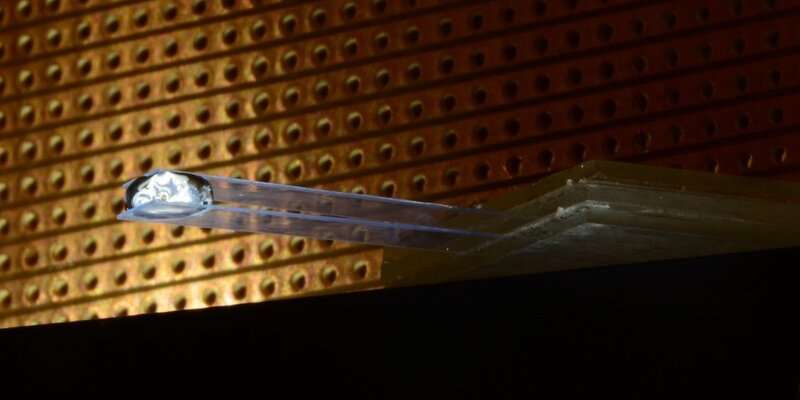February 27, 2019 report
A way to get a liquid to move through a channel without a driving force

A team at the University of Oxford has found a technique to move liquid through a small channel without using a driving force. In their paper published in the journal Physical Review Letters, the group describes their technique and how it works.
Humans have used driving force to move liquids through channels for thousands of years—from gravity to pumps, driving forces push liquids where we want them to go. But sometimes, it would be advantageous to mobilize water or other liquids through a channel without the need for such a force—a drug delivery system is just one example. In this new effort, the researchers have found a way to move water and oil through a tiny channel without applying a driving force.
The technique consisted of creating a channel by using glass coverslips, each just a half-centimeter wide. The coverslips were coated with a material known to attract oil but to repel water. The coverslips were then clamped to form a channel just a few hundred micrometers wide. Notably, the coverslips were firm but also a little bit flexible. The researchers then added a liquid to the closed end of the channel to see how it would behave. They did so multiple times, adding amounts from 10 to 25 microliters of either oil or water. The researchers report that both liquids moved toward the open end of the channel without being pushed.
Upon closer inspection, the researchers found that when water was added, the walls of the channel expanded outward slightly—this was due to the repelling force between the water and the chemical that had been applied to the walls. With the oil, the opposite occurred. The attraction between oil and the chemical on the walls pulled them in slightly. In both cases, the flex in the walls produced a pressure gradient that pulled the water along the channel. The researchers describe the motion of the liquid in their channel as "bendotaxis" and suggest its use in applications that use pipes to carry liquids.
More information: Alexander T. Bradley et al. Wettability-Independent Droplet Transport by Bendotaxis, Physical Review Letters (2019). DOI: 10.1103/PhysRevLett.122.074503
Journal information: Physical Review Letters
© 2019 Science X Network





















